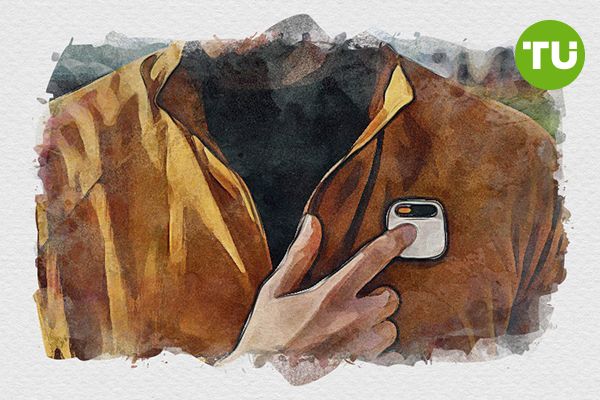Humane AI Pin: A cautionary tale of rise and fall
 The rise and fall of Humane AI Pin
The rise and fall of Humane AI Pin
The idea of an AI-powered wearable replacing your smartphone is captivating. Humane, a promising startup, sought to make this vision a reality with its ambitious AI Pin. However, just as quickly as it launched, the dream crumbled.
Humane is shutting down, selling its assets to HP at a fraction of its raised capital. Was the AI Pin simply ahead of its time, or did it expose the fundamental challenges of AI wearables?
What was the Humane AI Pin?
Humane’s AI Pin was introduced as a revolutionary screenless smartphone, designed to replace traditional mobile devices with an intuitive, AI-powered wearable. The device featured a built-in laser projector, which displayed information directly onto the user’s palm, eliminating the need for a conventional screen. It relied on GPT-4 for AI functionality, offering a natural and seamless interaction experience.
The compact gadget consisted of two parts: a square computing unit and a battery pack, which attached magnetically to clothing or surfaces. Weighing just 54 grams, it was designed for portability and convenience.
Powered by a Snapdragon processor, the AI Pin performed essential smartphone tasks like making calls, setting reminders, and answering queries via voice commands. Users could control the device using a touch panel or the projection interface, which responded to hand gestures such as rotations, palm movements, and finger pinches.
Equipped with a 13-megapixel camera, the AI Pin could take photos via voice command or a double-tap on the touch panel. The camera also allowed AI to visually interpret objects, providing real-time contextual assistance. All user data, including photos, notes, reminders, and interactions, was stored in the cloud and accessible via a web interface.
What went wrong with the Humane AI Pin?
The Humane AI Pin aimed to revolutionize the way we interact with technology—offering a screenless, voice-controlled experience with projected displays. The concept was futuristic, but the execution fell short. The launch was rocky from the start, with early adopters reporting slow response times, inaccurate voice recognition, and an overall clunky interface.
Instead of excitement, frustration grew as the AI assistant failed to deliver on its promises. Consumer adoption was disappointingly low, and reports indicated that returns outpaced purchases, a clear sign of a product that did not resonate with the market.
Another major hurdle was the technological limitations of the AI Pin. The promise of seamless and intuitive AI-driven interactions proved overly ambitious, as the assistant struggled with real-world applications and failed to meet user expectations. On top of that, the AI Pin was priced at a premium, but its limited functionality and inconsistent performance made it a tough sell.
Consumers, already deeply integrated into their smartphone ecosystems, saw little reason to switch to an unproven and expensive alternative.
Loading...
HP’s move and the future of AI wearables
HP’s acquisition of Humane’s assets raises intriguing possibilities. One potential strategy is the integration of AI Pin technology into HP’s existing products. AI-powered features could become a staple in HP laptops, printers, and enterprise solutions, enhancing productivity and user interaction. Another possibility is that HP was primarily interested in acquiring Humane’s team, which consists of some of the top minds in AI and wearable technology.
The technology itself may also have a second life. While the AI Pin failed in its current form, the idea of screenless, AI-powered wearables remains a compelling one. HP could experiment with different designs and functionalities to find a niche that resonates with consumers. Additionally, Humane likely accumulated valuable patents related to AI and wearable computing, which HP could use to strengthen its competitive position in the evolving tech landscape.
The bigger picture: Where do AI wearables go from here?
Humane’s failure does not signal the end of AI wearables, but rather provides an opportunity for reflection and refinement. The potential of AI-powered devices remains strong, particularly in areas such as hands-free convenience, proactive assistance, health monitoring, and augmented reality.
Wearable devices have the ability to free up users’ hands, making interactions with technology more intuitive. AI-powered assistants can anticipate user needs, providing reminders, personalized notifications, and streamlining daily tasks. Health-focused wearables have already proven their value by tracking metrics such as heart rate, sleep patterns, and overall wellness, promoting healthier lifestyles.
Augmented reality wearables, like smart glasses, offer immersive experiences by overlaying digital information onto the real world, enhancing everything from navigation to professional workflows.

The Humane AI Pin. Source: humane.com
AI wearables 1.0 era
The AI Pin’s failure suggests that AI wearables are still in their infancy. Before these devices become mainstream, significant advancements are needed. AI and battery technology must continue to evolve to support seamless, long-lasting interactions. The user experience needs to be refined to ensure that interacting with these devices feels natural and effortless.
Beyond just the technology, wearables must offer a clear and compelling value proposition that differentiates them from smartphones and other existing devices. Additionally, privacy and security concerns must be addressed, as these devices collect vast amounts of personal data. Without strong protections, users may be hesitant to adopt them.
What’s next for AI wearables?
Although the Humane AI Pin did not succeed, its vision could still shape the future of wearables. Rather than attempting to replace smartphones entirely, the next wave of AI wearables may find success by focusing on specialized applications. The lessons learned from Humane’s experience will undoubtedly influence the development of the next generation of wearables.













































































































































